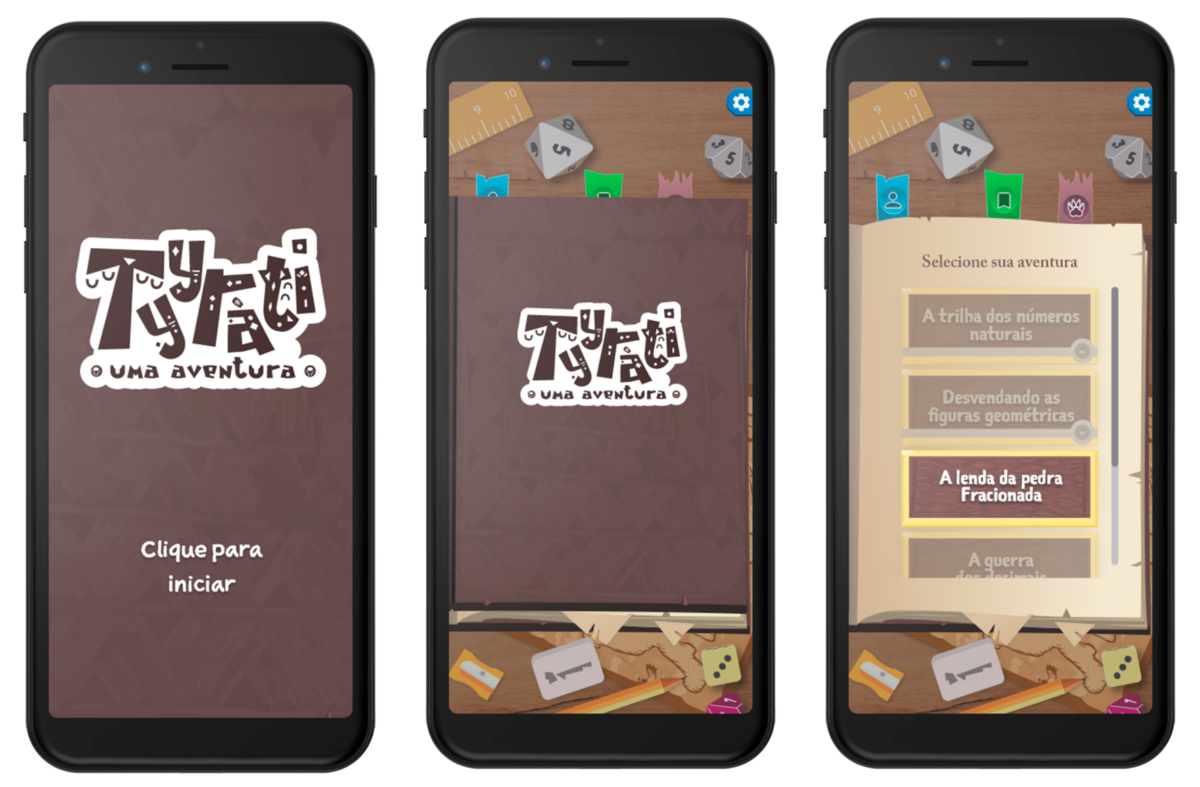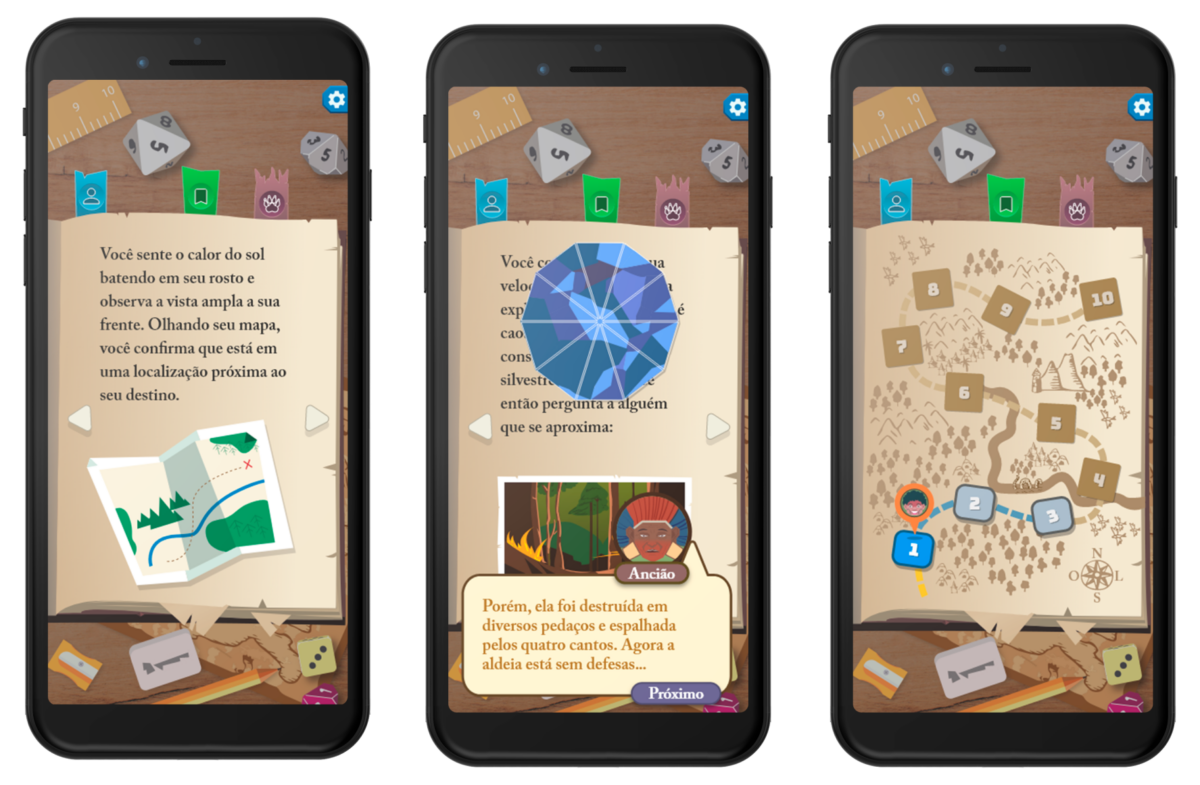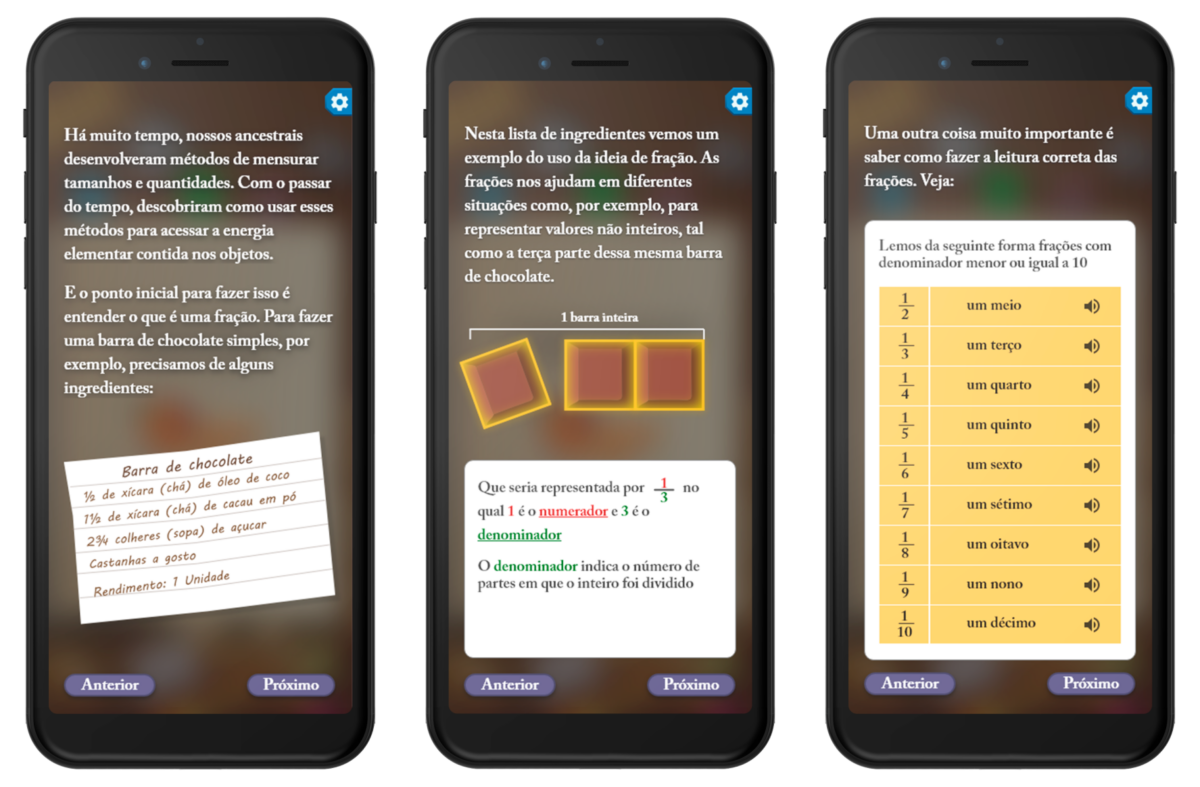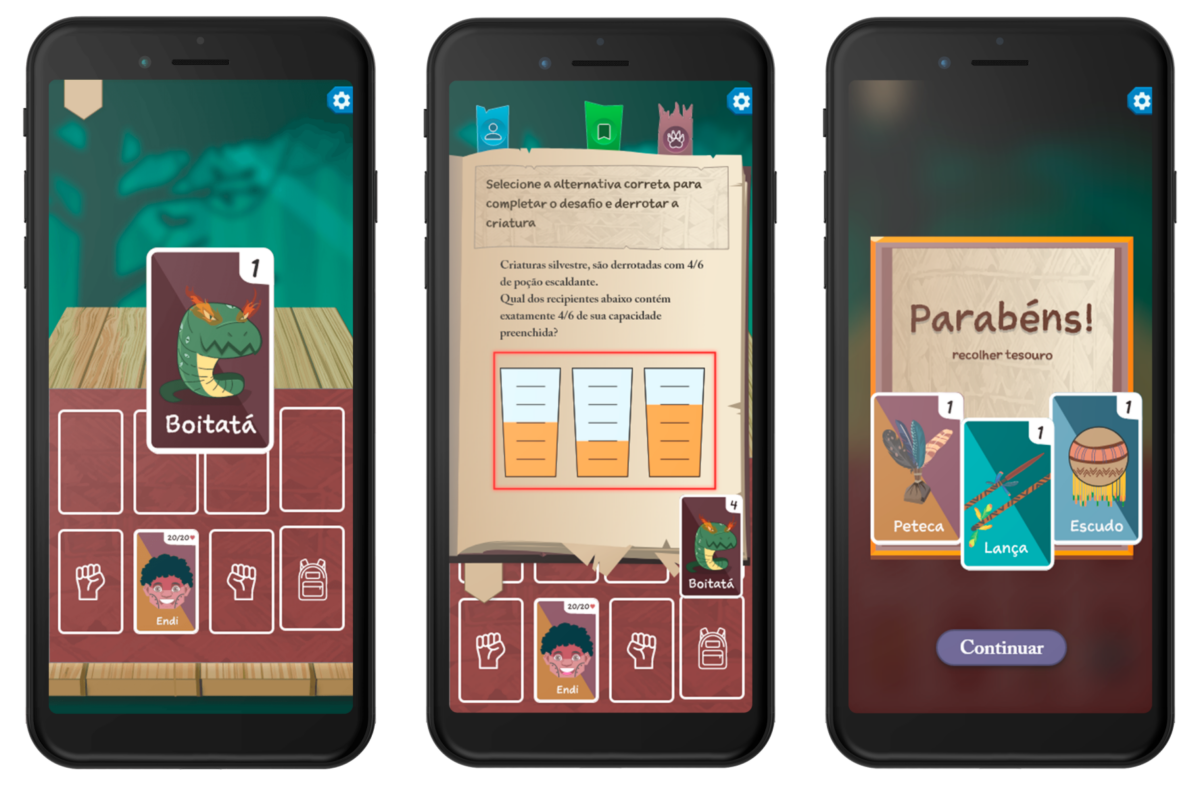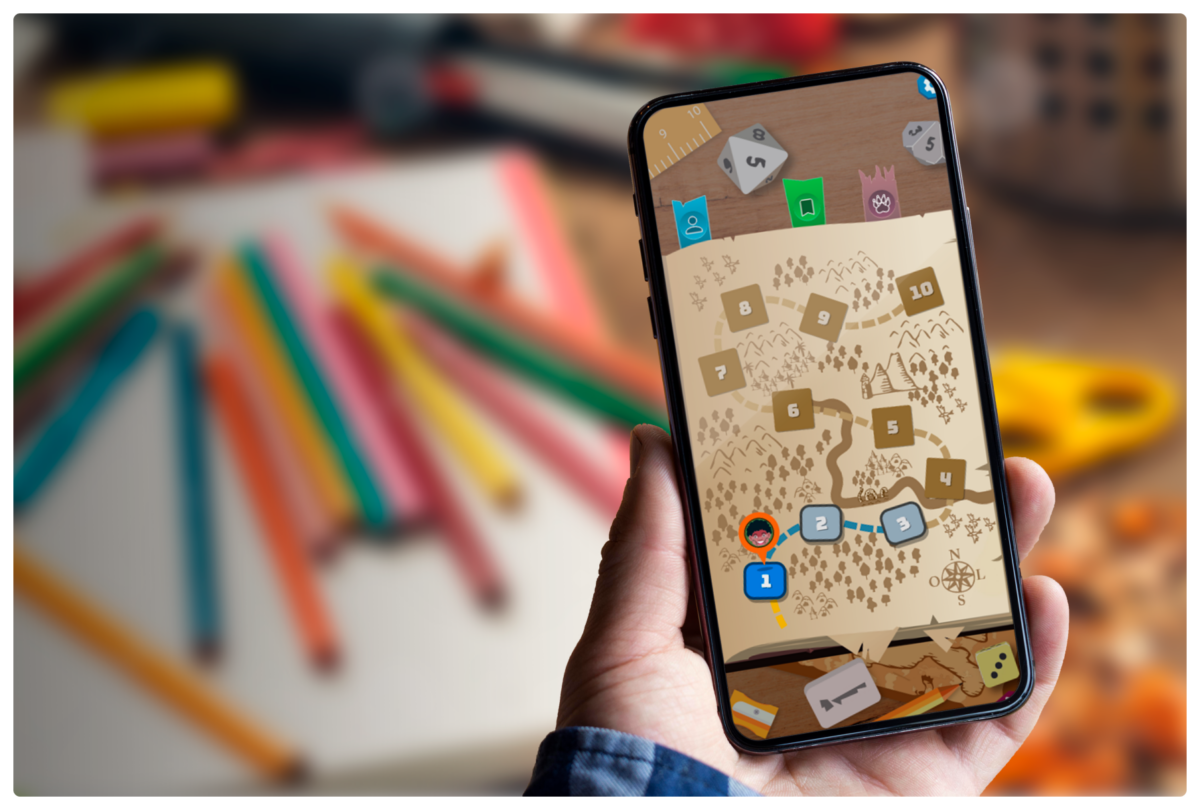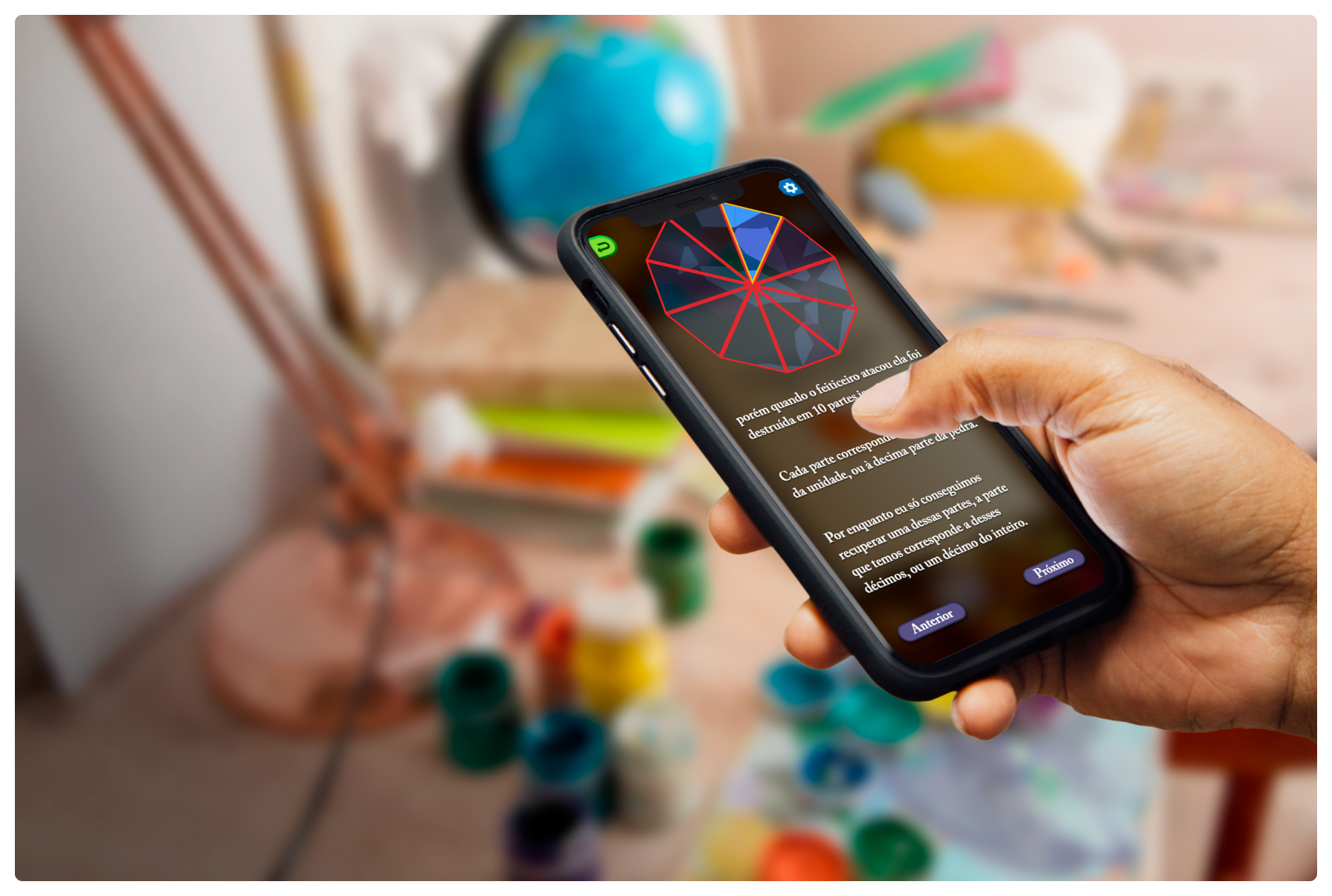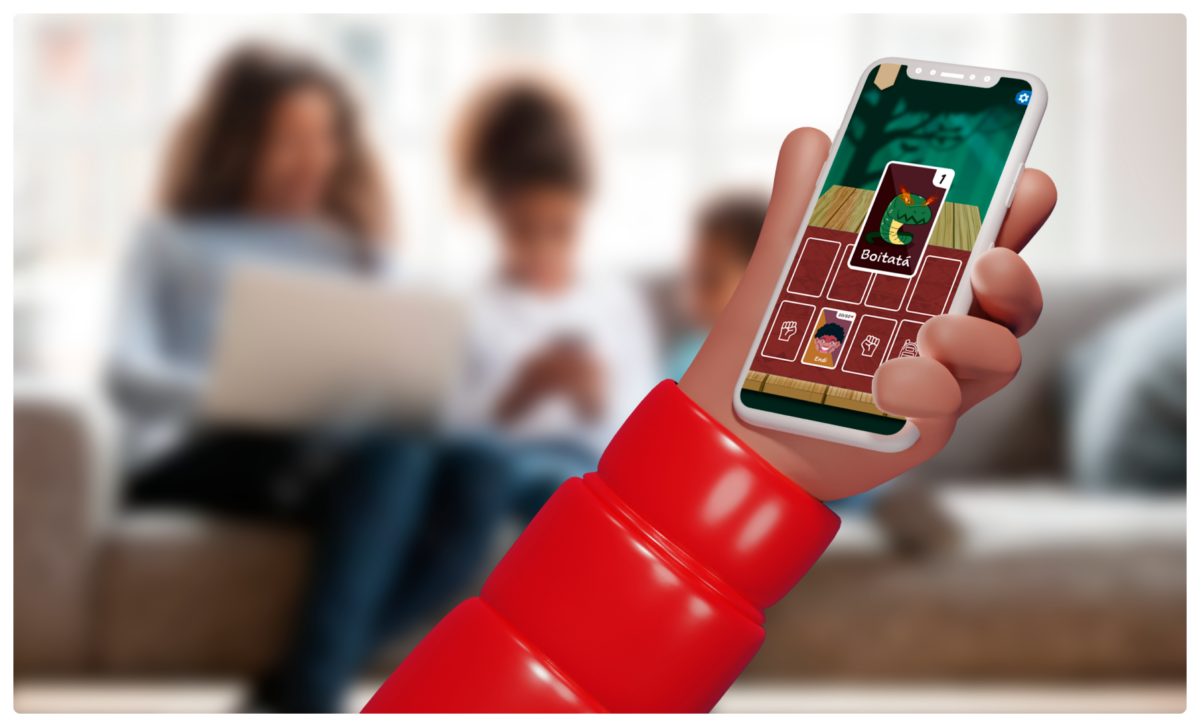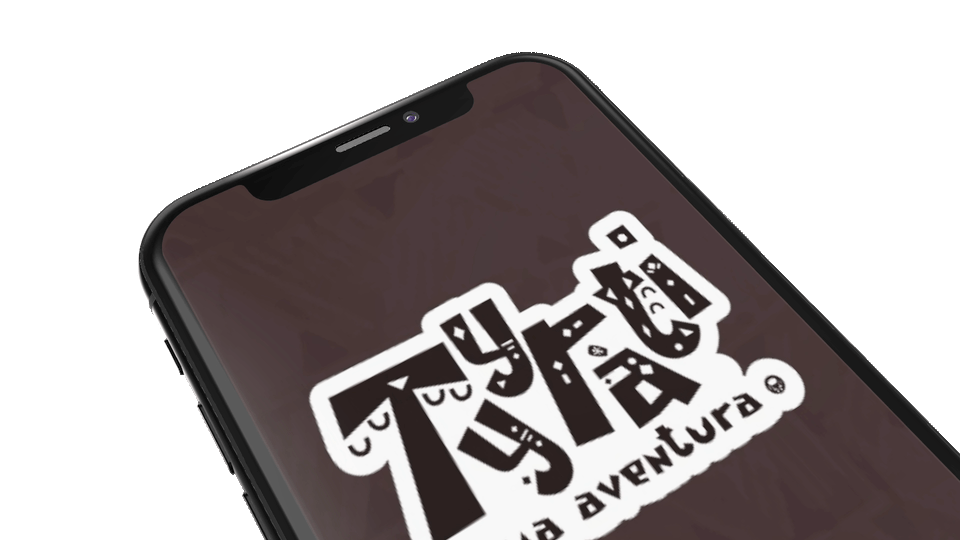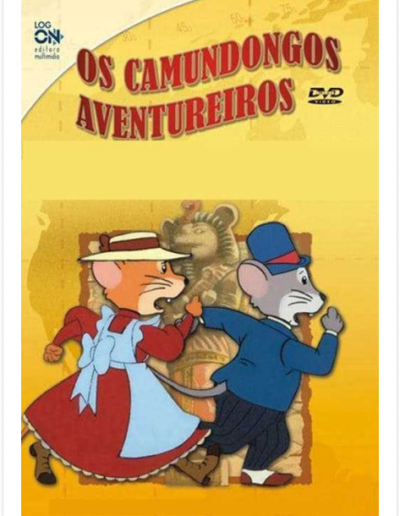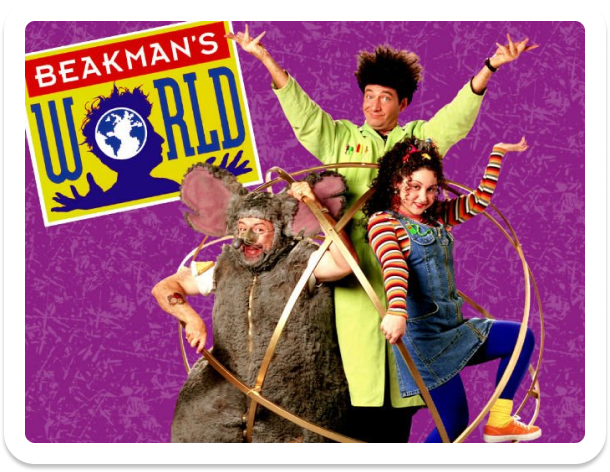Client
Author's project
Role
Time-frame
6 months
Overview
The Problem
Much of the motivation for creating this project came from my own memories of my school days, and how I didn't see classes as and school activities as enjoyable, or as something I enjoyed doing.
The starting point
However I can also list many memories of fun times with some of the educational programs they had on television back then.
Programs like:
- Cyberchase
- Beakman's World
- The Country Mouse and the City Mouse Adventures
And how successful they were in keeping my interest in their respective subjects.
Goals
The project's objective is: to make use of electronic games with support, to give new life to the content available in didactic materials, aiming to generate a greater engagement of the students with the subjects studied.
In this way we intend to:
- Create a healthier relationship between children and school-related activities.
- Combine fun and learning.
- Show that subjects thought to be boring or difficult can be made more friendly.
Methodology

Development
After deciding on the theme and objectives, a key point for the project was an interview/ conversation with some elementary school teachers.
Thus arriving at some clearer definitions of scope and audience:
- The public identified in talking to the teachers was that of 6th grade students; according to the teachers, this new cycle of school experience brings a less playful perspective to teaching.
- The scope of content chosen was fractions seen in mathematics, this cut was made from the confirmation, by the teachers that mathematics is still seen as the subject least liked by the students.
Search for similar products
Pathfinder Adventure Card Game
Pathfinder Adventure Card Game is a cooperative, deck-building card game based on the popular RPG of the same name.
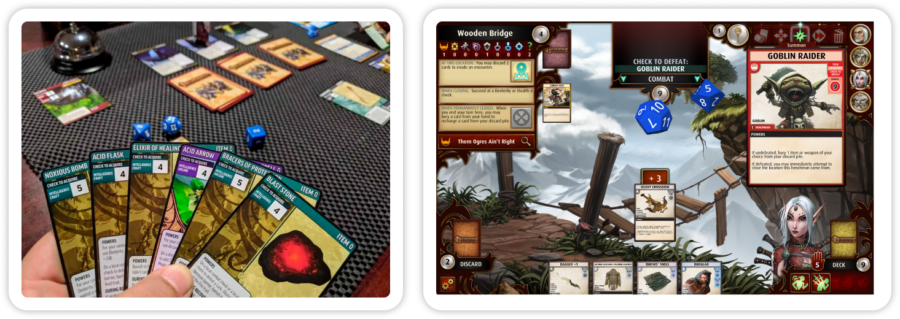
↑ The Pathfinder Adventure Card Game, has both physical and digital versions.
Onirim
In Onirim you must work against the game to gather the eight dream doors before the deck runs out.

↑ Onirim game in physical and digital versions.
Iconographical research
Solarpunk
Solarpunk is an art movement that contemplates what the future might look like if humanity can solve major contemporary challenges with an emphasis on sustainability issues such as climate change and pollution, as well as social inequality.
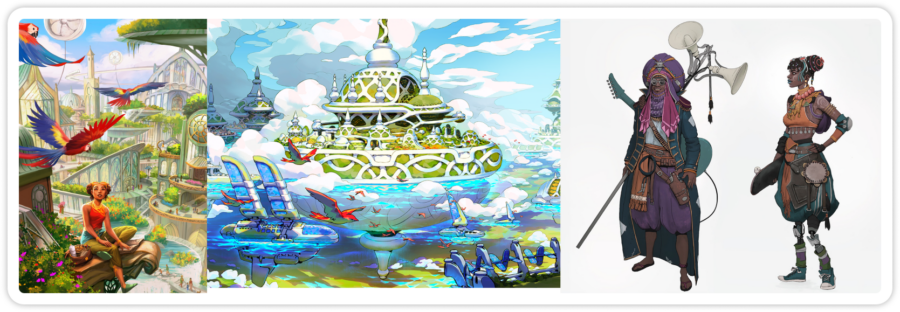
↑ Conceptual art about a future seen through the lens of Solar Punk.
World Building
A strong inspiration for the setting of the world came from subgenres such as Amazofuturism.
The player will be a young explorer eager to discover new peoples, places, and thus obtain fantastic new knowledge. Living in a world full of technology and knowledge from the most varied and remote places on the planet.
Amazofuturismo
Amazofuturism is a subgenre of science fiction. It is based on Amazonian indigenous societies that are highly advanced from the point of view of their technology and social justice.
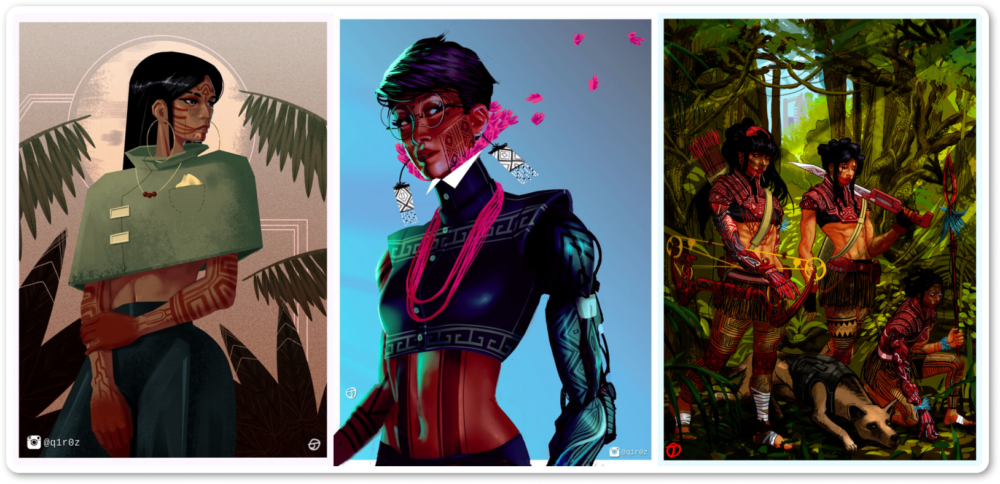
↑ Work done by illustrator João Queiroz.
Structure
The project was planned so that its elements would be organized in structures common to textbooks, and so it was specified that each chapter of the textbook would be an adventure within the game and each sub-item of this chapter would be a scenario to be explored
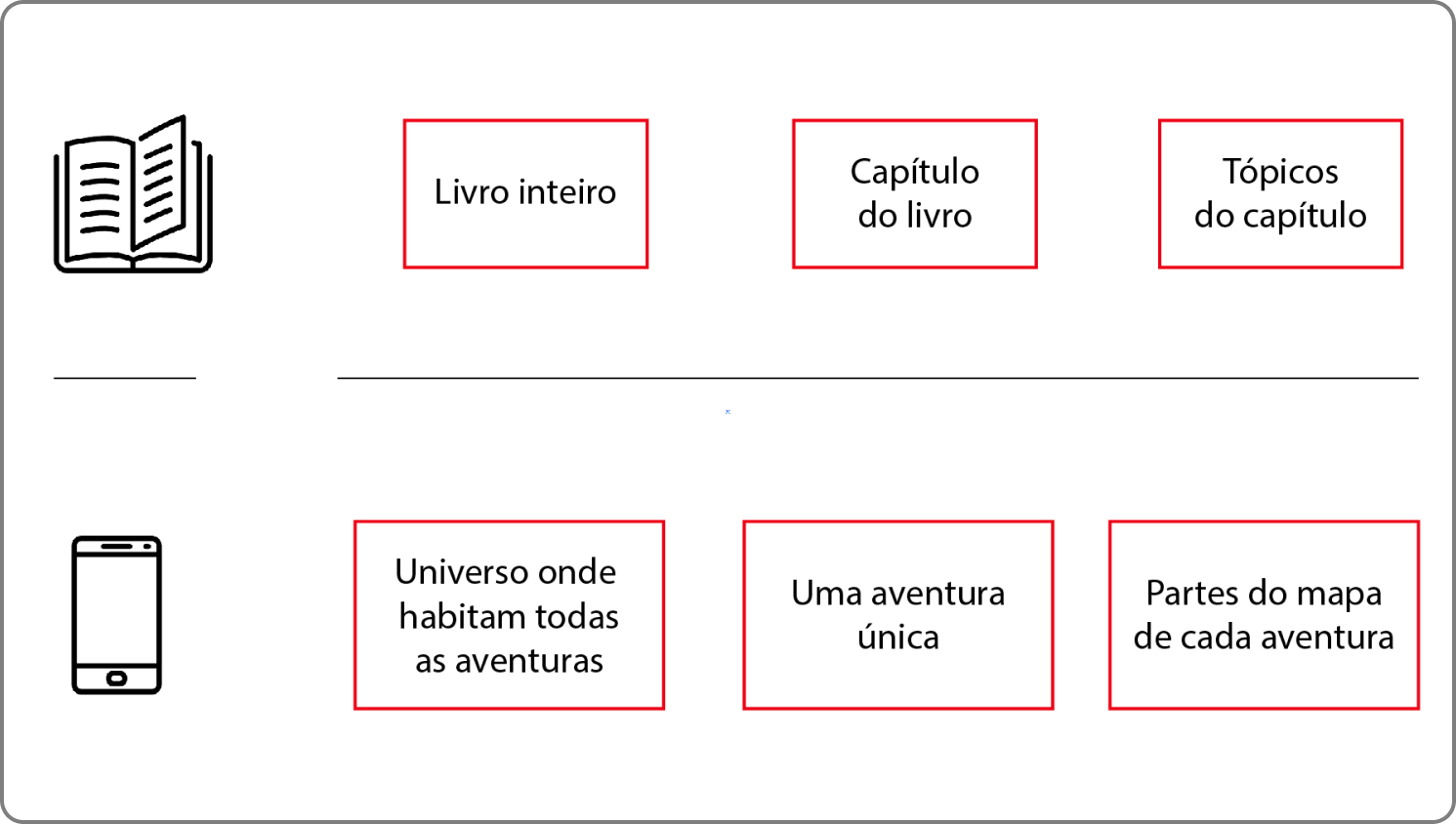
↑ Scheme demonstrating the transposition of the textbook structure into an electronic game.
Naming
Another important point mentioned by the teachers was the importance of interdisciplinarity during the lessons.
Nesse sentido, a forma que pensei para abordar outros temas como história ou geografia foi inserir no jogo, as histórias, costumes e folclore do Brasil provenientes das nossas raízes nos povos indígenas
The name Tyyràti comes from the Karajá language, spoken by the indigenous people of the same name who inhabit the northern and central-western regions of Brazil.
Tyyràti means something like Book or Writing.
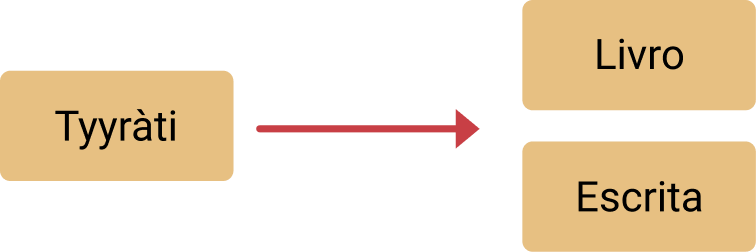
The story
Story created to give context to the adventure that will deal with the fractions theme, called: The Legend of the Fractionated Stone
The Legend of the Fractionated Stone
During yet another expedition to a village known for its mastery of the art of numbers and for creating artifacts of immense power, our hero is faced with an important mission, that of recovering all the fragments of the powerful Whole Stone, the item responsible for the village's energy and protection, which was destroyed by a powerful dark wizard.
Characters
With the world and story in hand, a lot of research was done, to create the characters for this adventure.
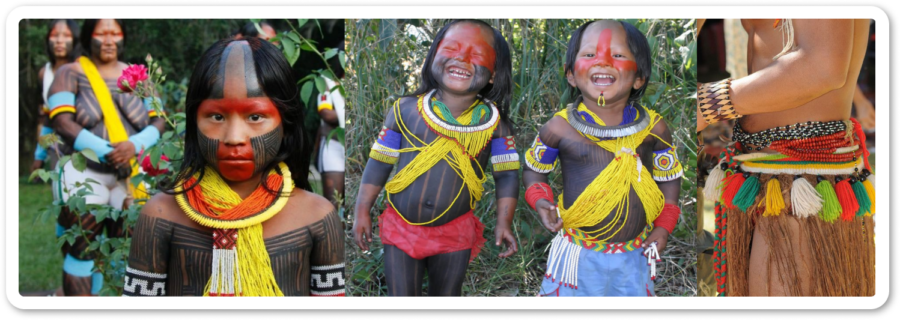
↑ References to indigenous adornments, accessories, and clothing.

↑ References to indigenous motifs, patterns, and paintings.
With the world and story in hand, a lot of research was done, to create the characters for this adventure.
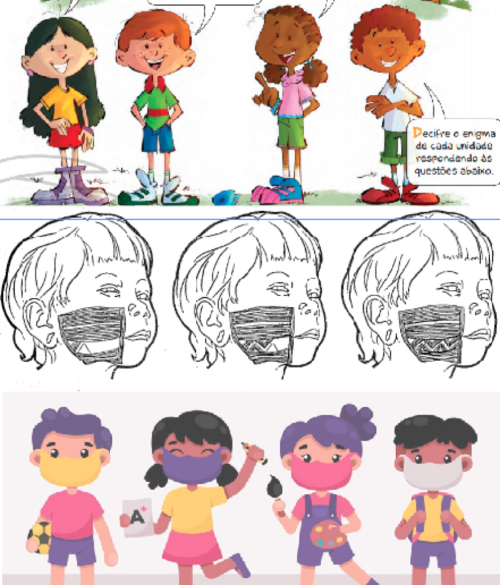
↑ Table of references used in the creation of the playable characters.
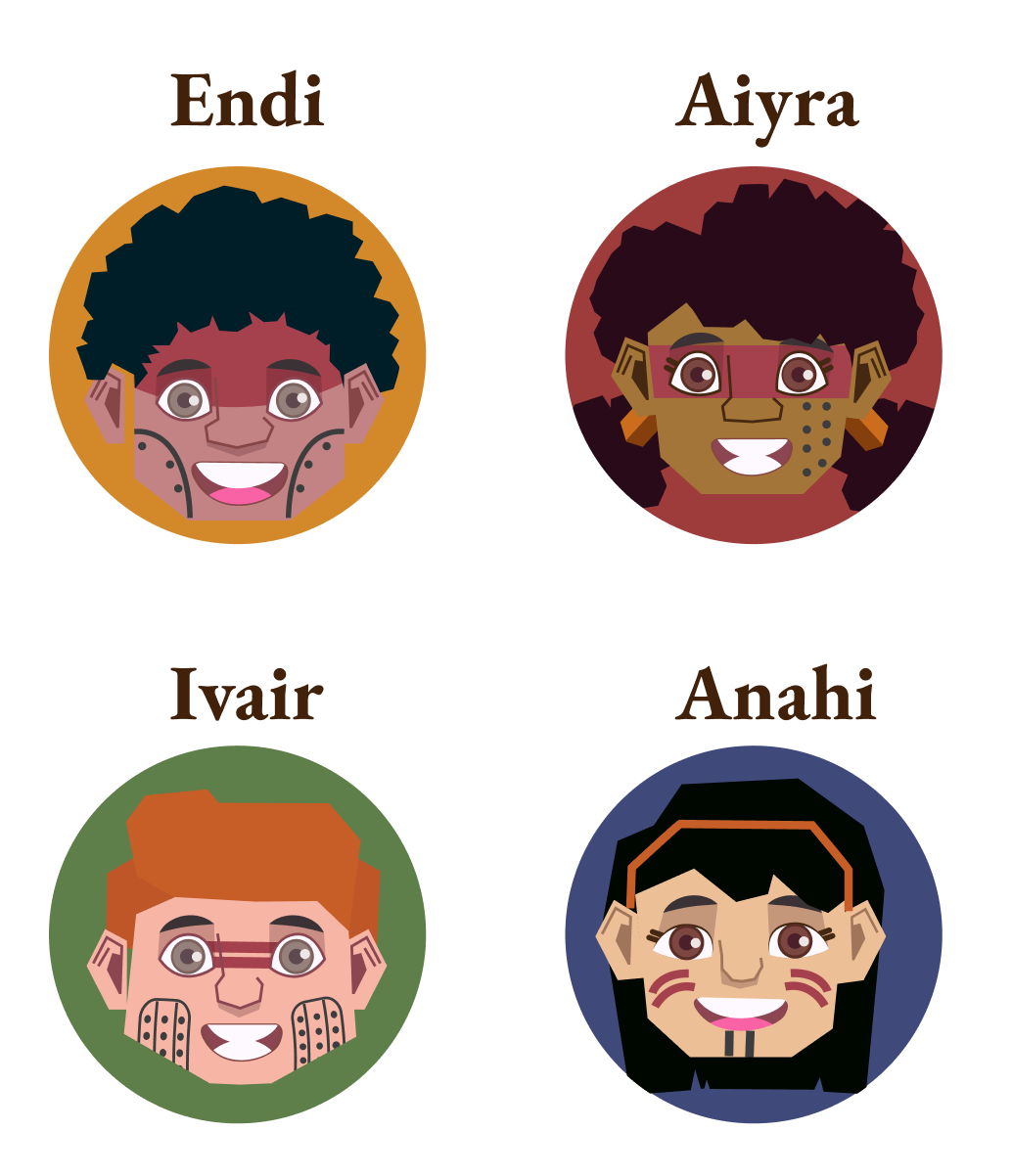
In the same way the non-playable characters were created, to aid the story.

↑ Frame of references used in the creation of the non-playable characters.
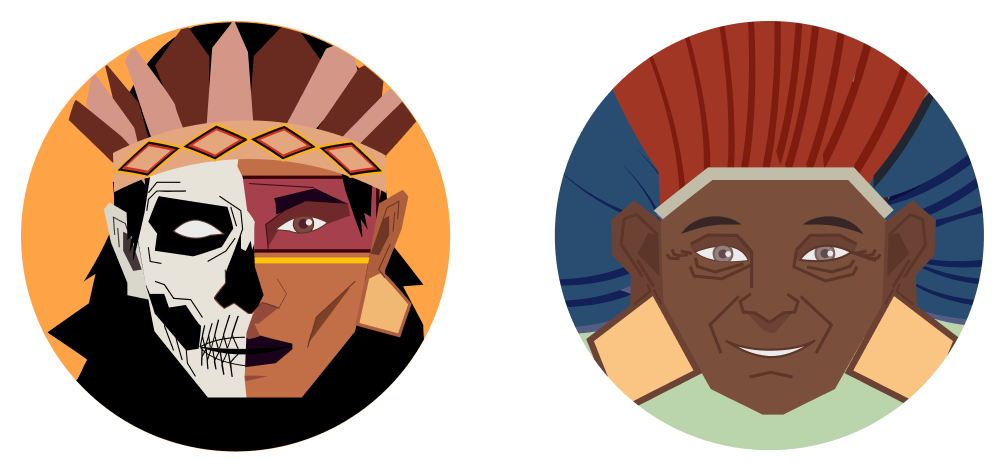
Creatures and other elements
The same process was used to create the other elements of the adventure, such as items and creatures. From a previous research were generated some inputs that, in turn, would be used as a basis for the creation of the illustrations.
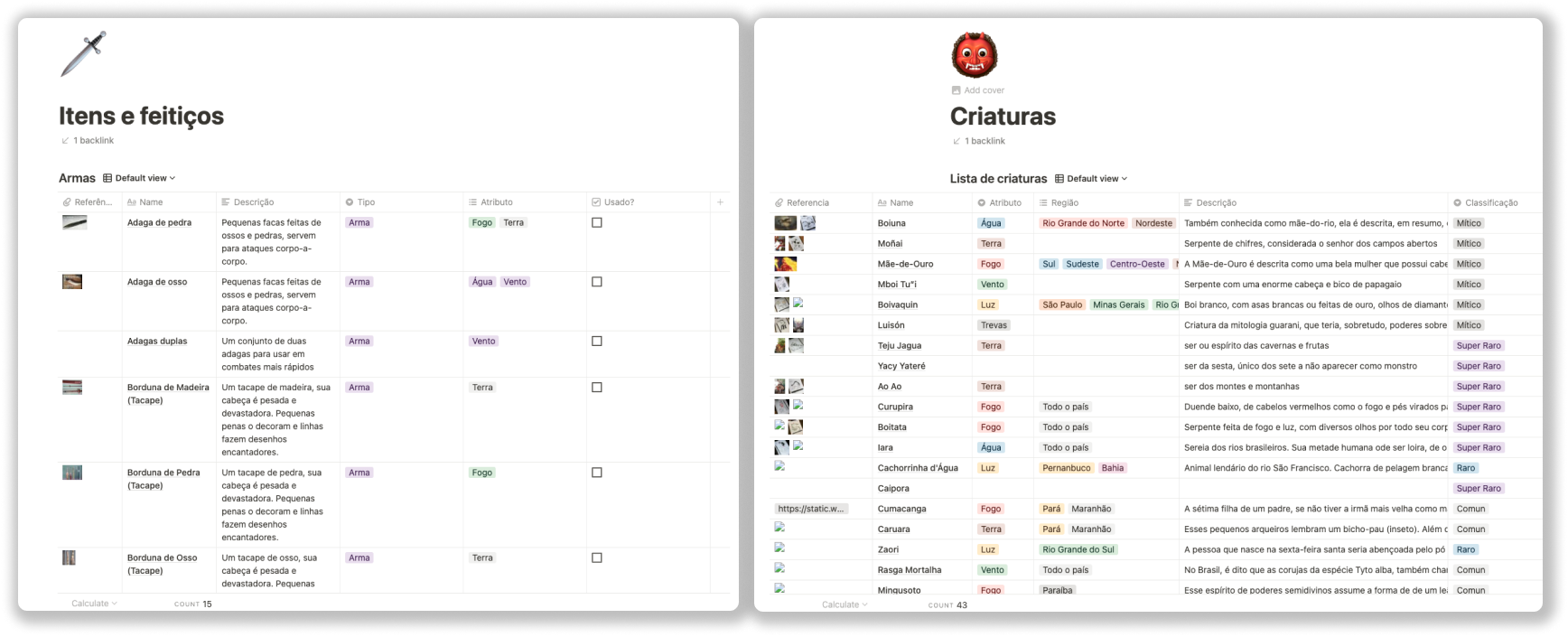
↑ Printscreens of some of the tables created to document and organize all the researched data about creatures, weapons, equipment and so on...
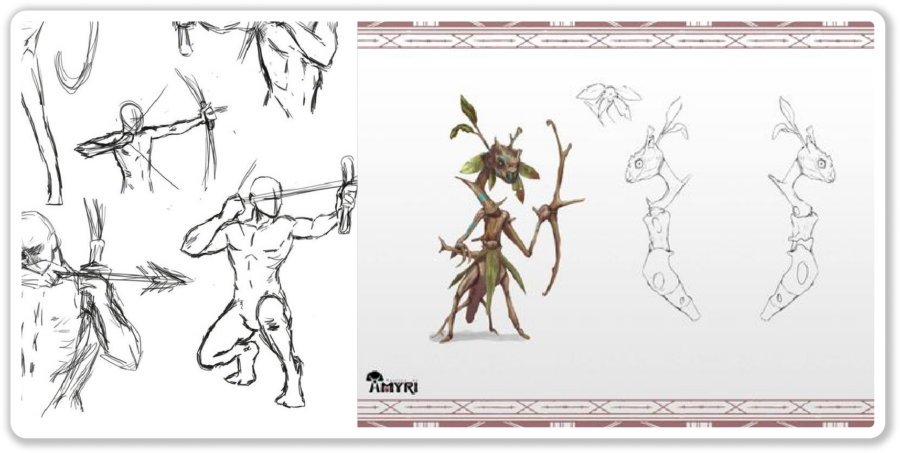
↑ References for Caruara, Drawing by Gustavo Paulino.

↑ Charts exemplifying the use of the complementary color scheme in chart creation
In the same way the non-playable characters were created, to aid the story.
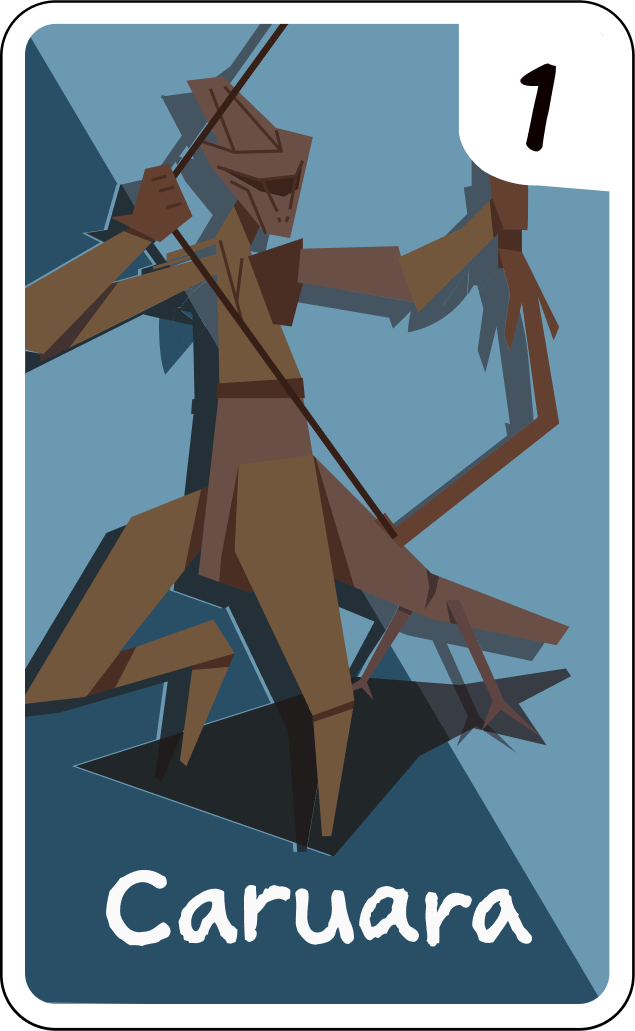
↑ Caruara creature card.
The cards for all creatures, items, and other game elements were created using the same process.
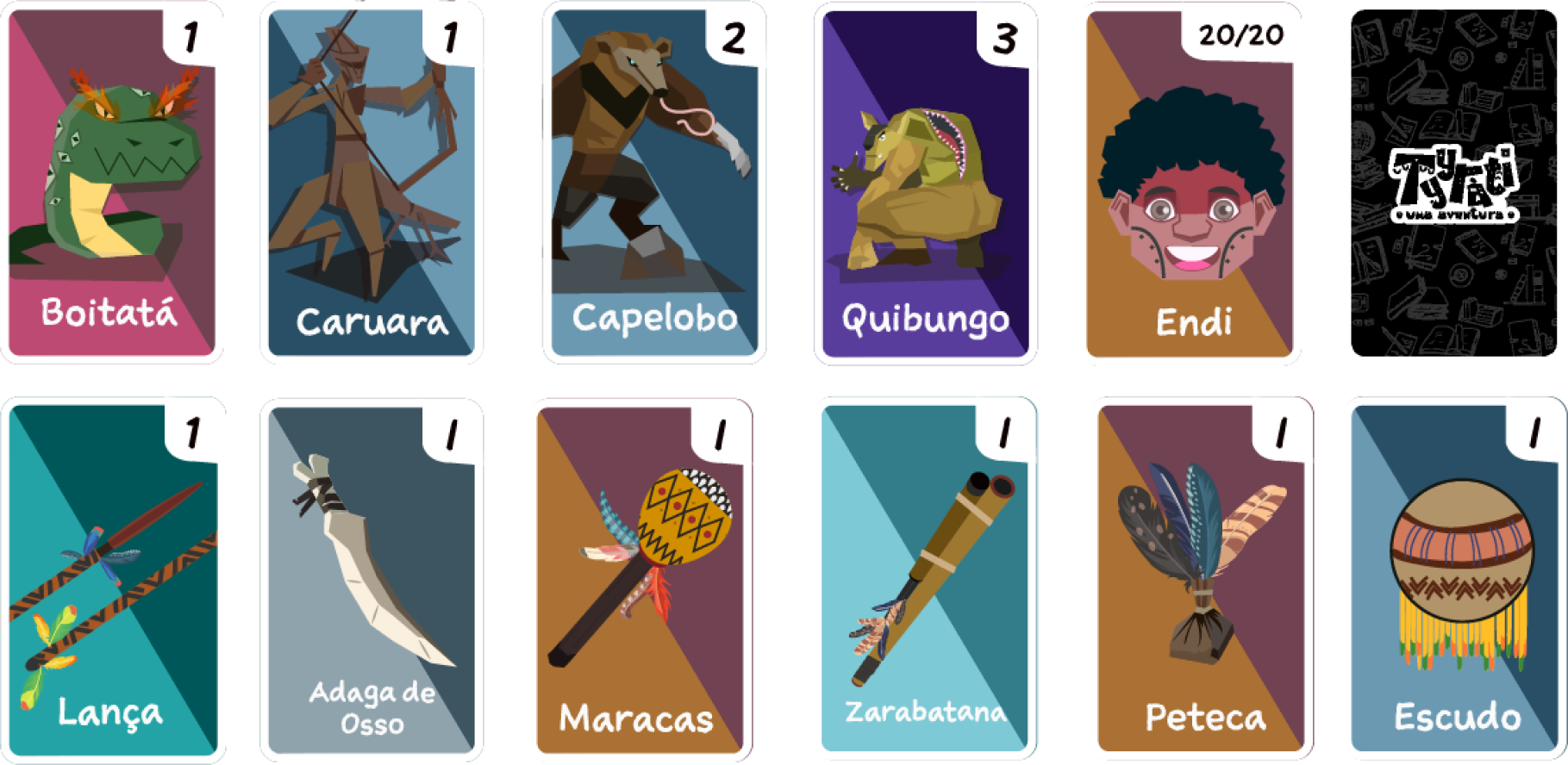
↑ Sample of the letters produced.
Interface design
After solving the game format and card art, I could then turn my attention to elaborating the existing structures and mechanisms in the interface.
Thinking about the flows
Initial planning of possible existing flows and interactions.
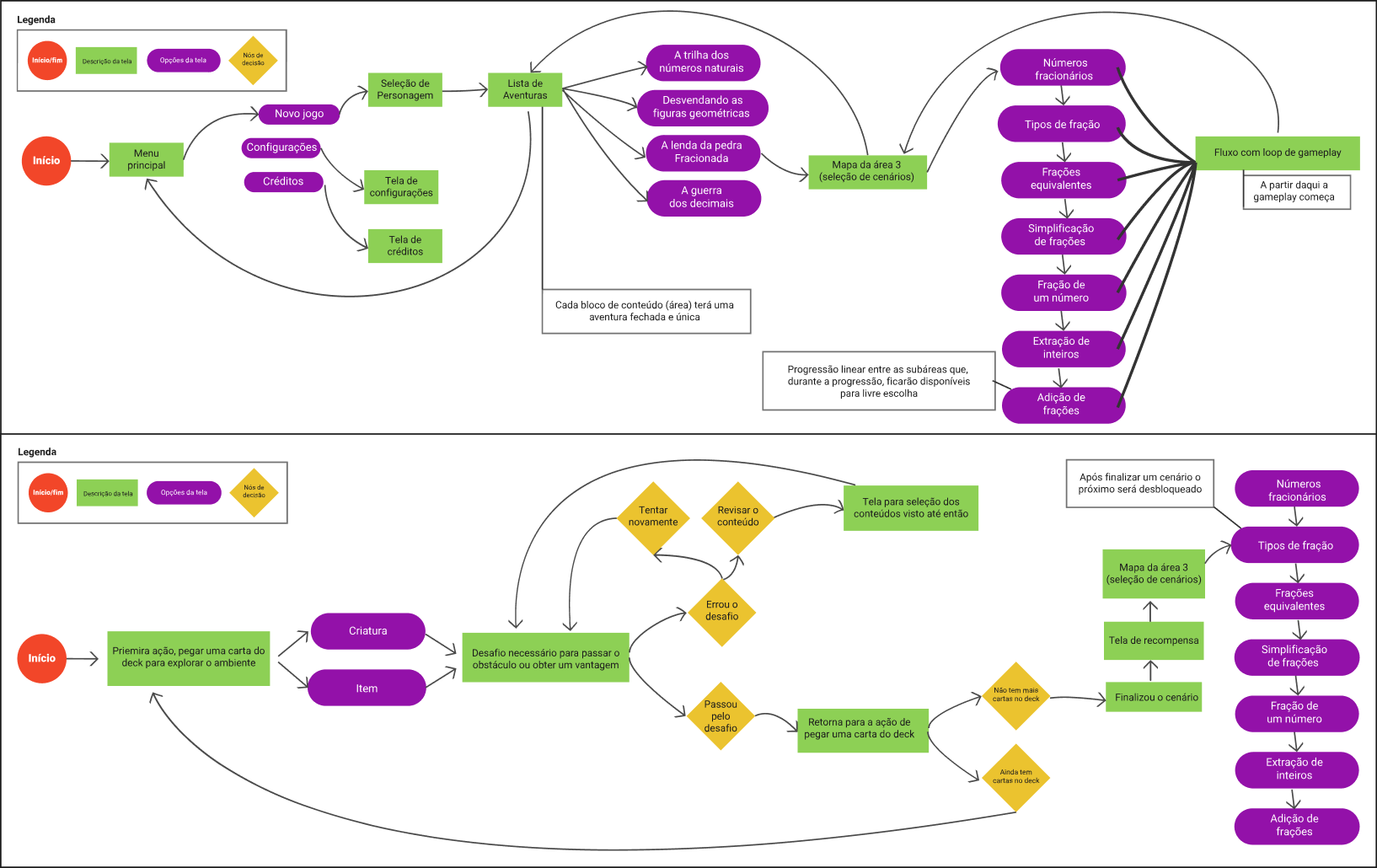
↑ Flows for general interface navigation and gameplay flow.
Sketches
With the help of the previous flow, drafts were developed, containing the initial ideas behind each screen, and several adjustments were made at this stage.
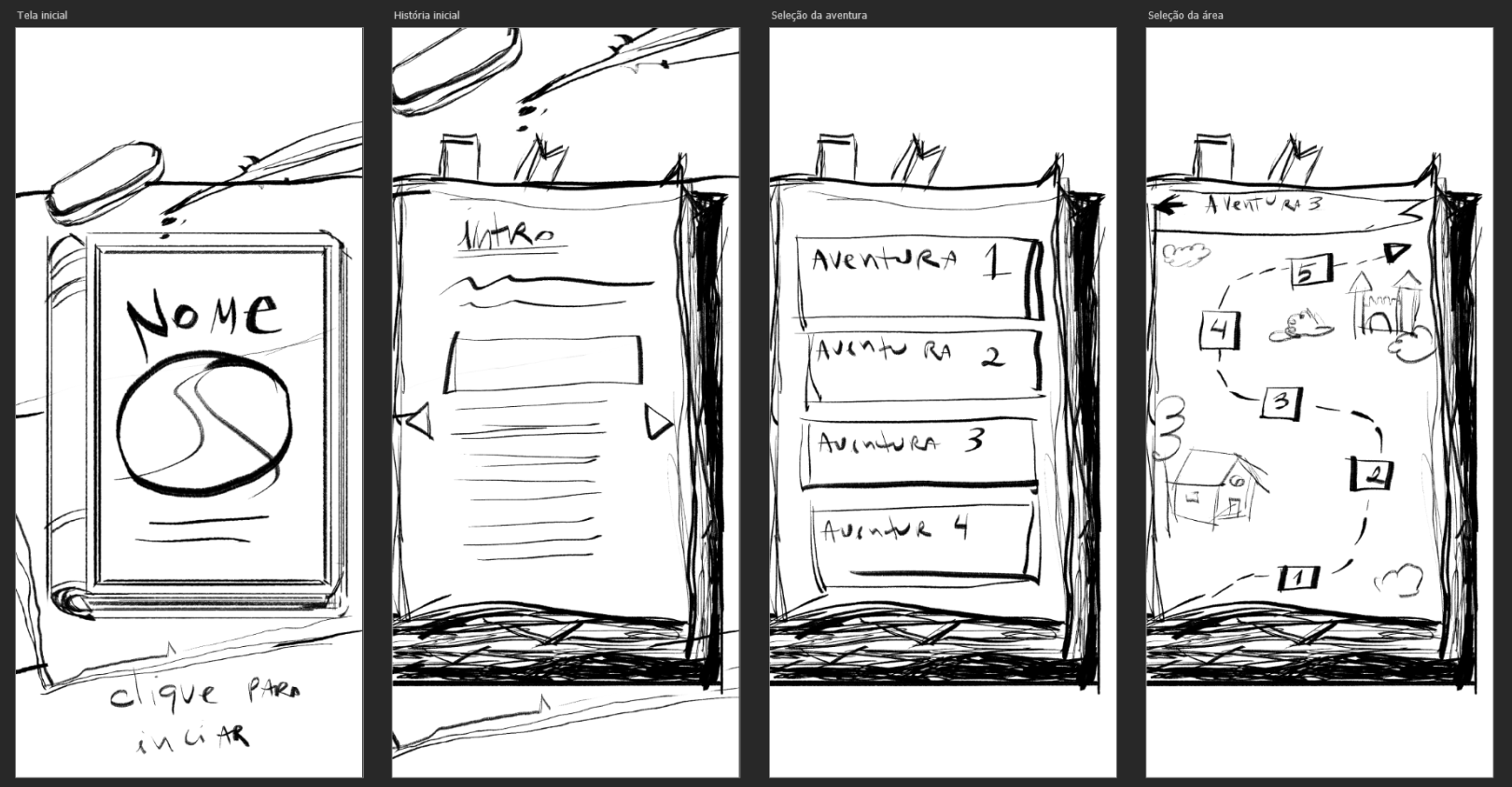
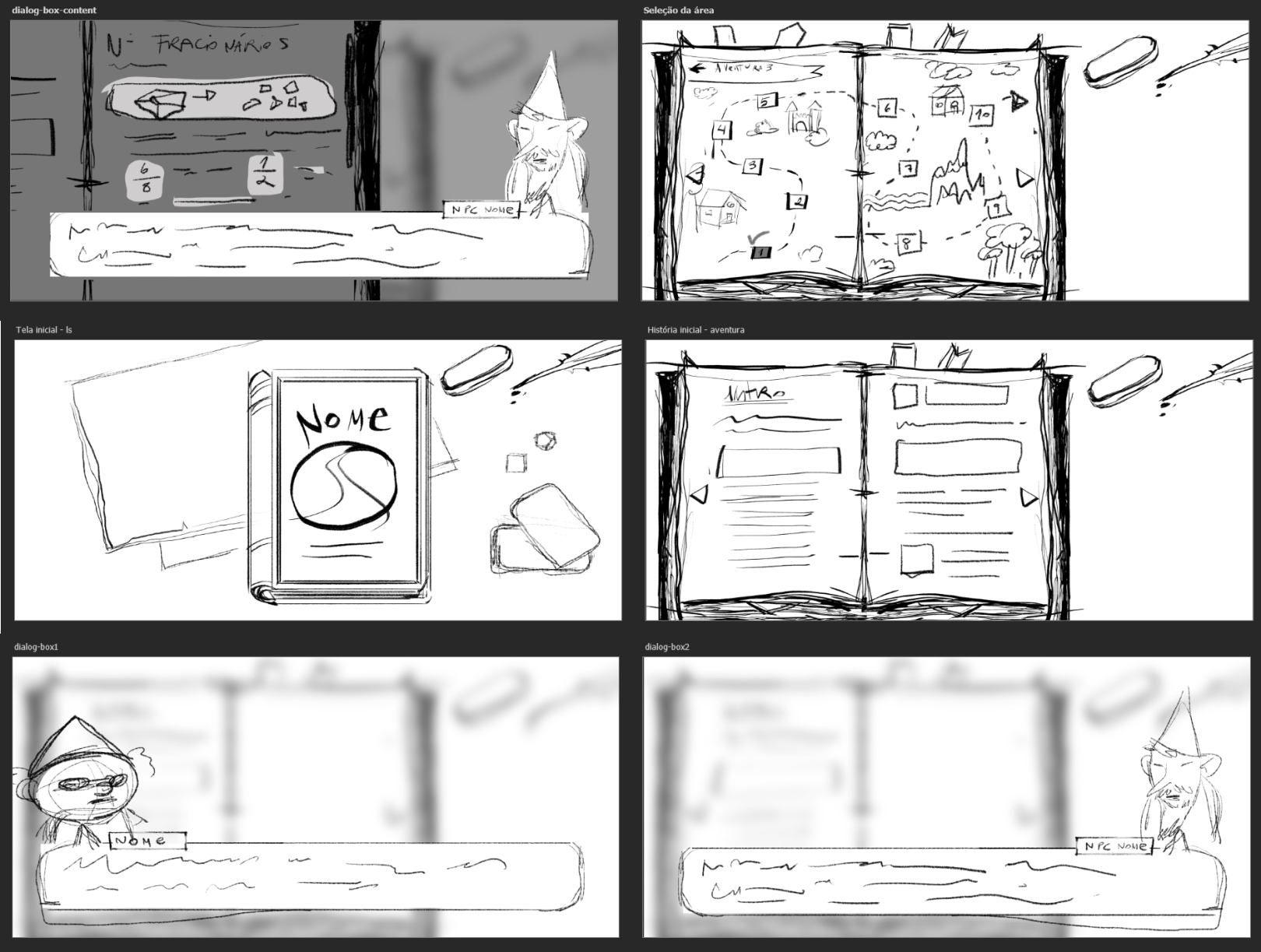
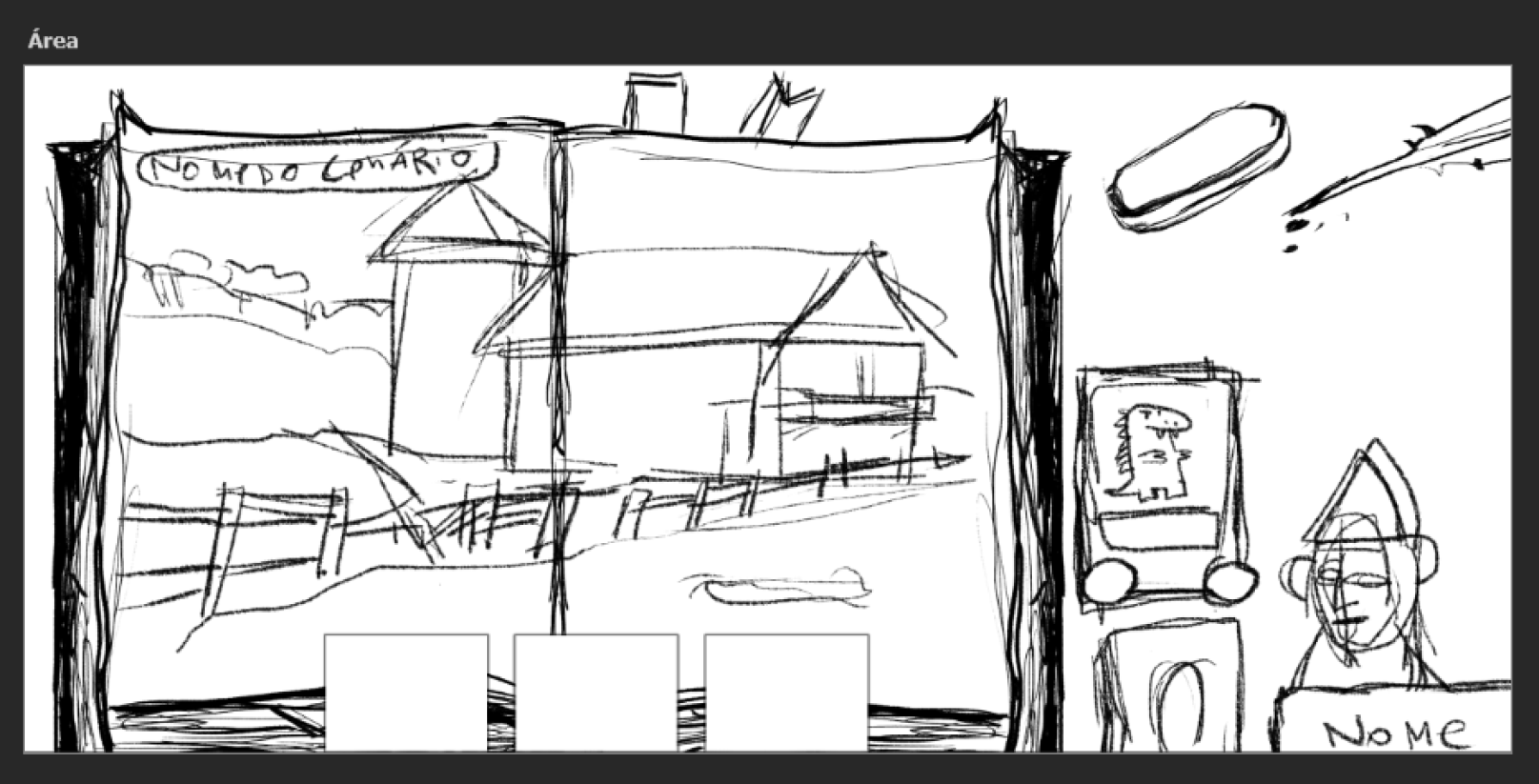
↑ Further in-depth post-studies, thinking about the layout and further defining the ideas.
Typography
Typography was also a crucial element to tie all the elements into their proper contexts, thus creating a clearer identity in each segment of the game.
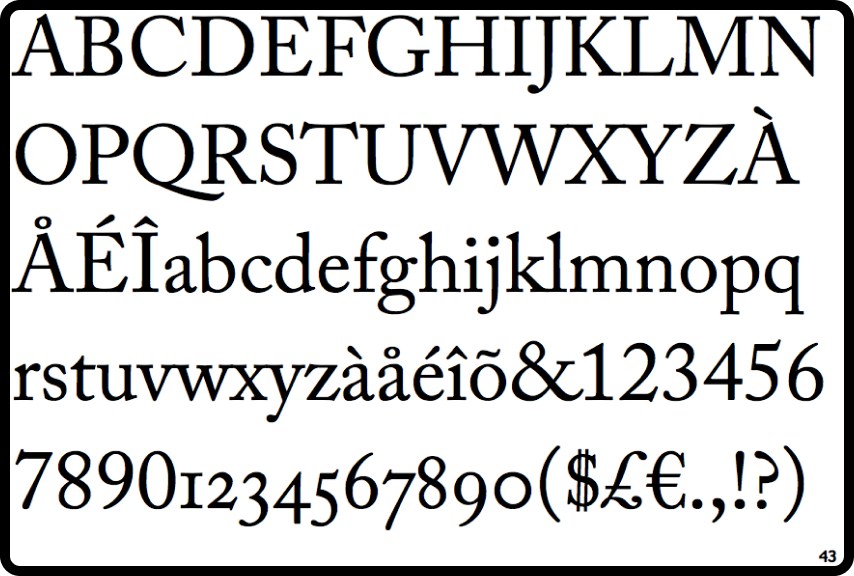
↑ Adobe Caslon is a humanistic serif font created by Carol Twombly in 1990.
In the segments containing the history and exposing the didactic contents, the Adobe Caslon Pro font was chosen, a serifed, humanistic font, the main objective, besides prioritizing readability, was to maintain a solemn character.
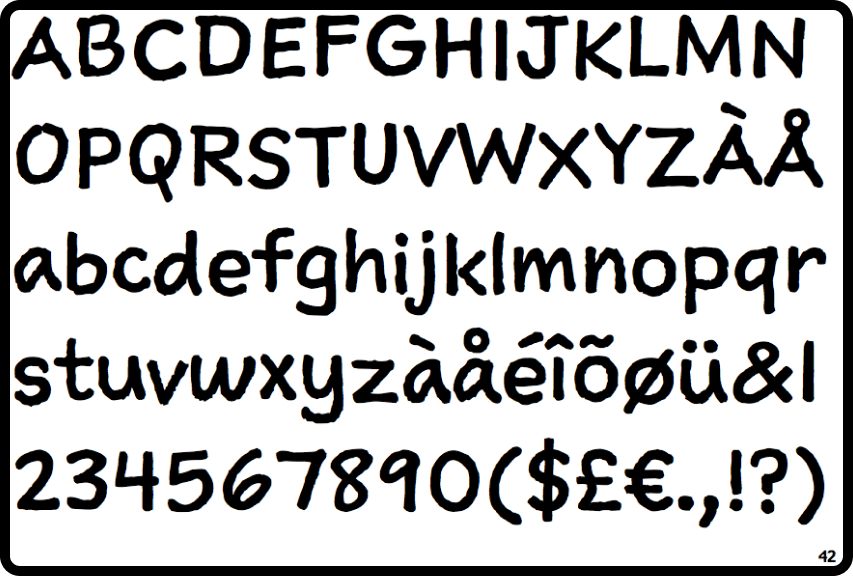
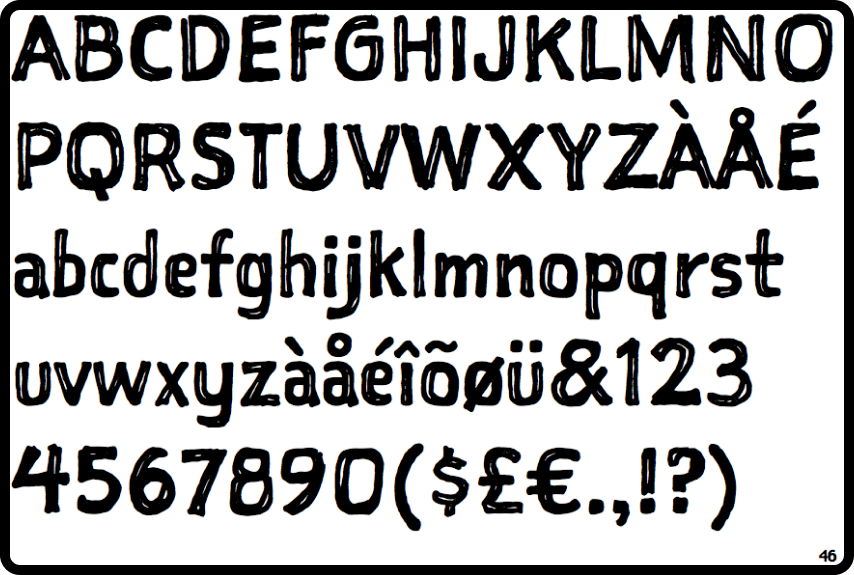
↑ Sketchnote Text and Sketchnote Square, are script fonts, created by Mike Rohde in 2013
In the segments of the card game itself, the idea is that at this moment the player feels immersed in the environment that the cards there intend to simulate. So I thought it was pertinent to use a script font, called Sketchnote Text and its variation Sketchnote Square, for its more rustic character, giving the feeling of freedom. Other variations of this family were used in some specific screens on the interface in a decorative way.
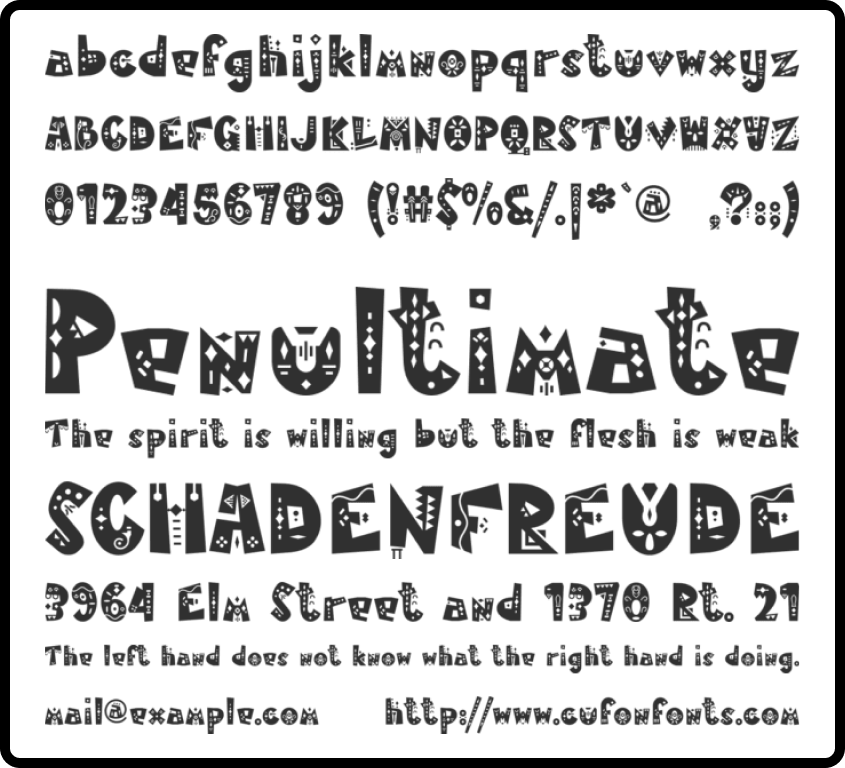
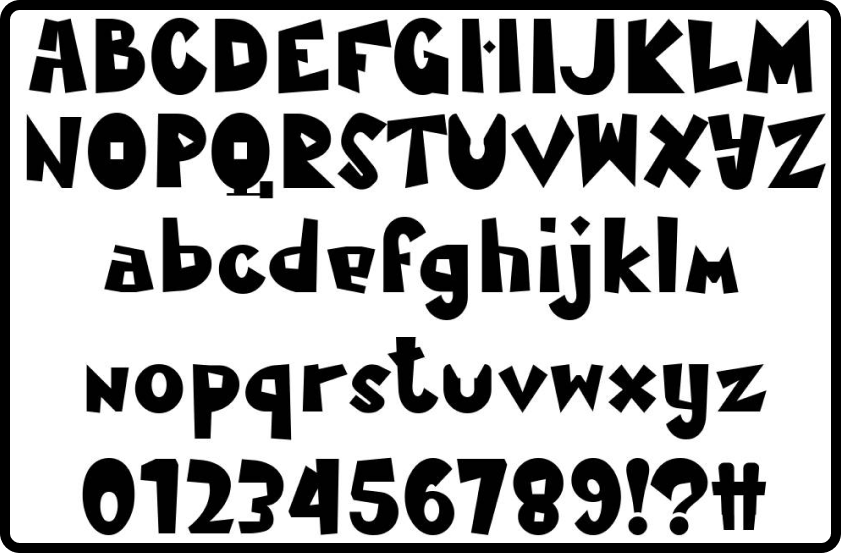
↑ Two variations of the decorative font used in the game's branding were created by emanesdsign.
The game's brand was created from a display or decorative font, called Mamakilo, a font created with ethnic inspirations and seeking a very decorative approach, containing several ornaments and details in its construction, besides having characters with variable sizes, bringing a "handmade" aspect.
Results
The following pages present the results obtained in the project.
